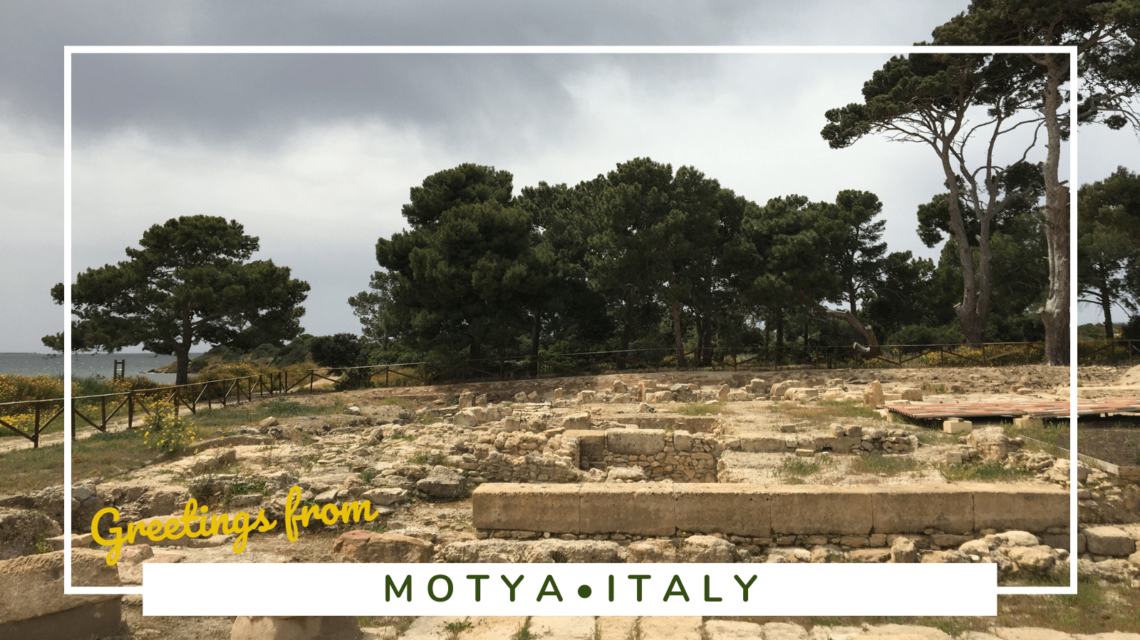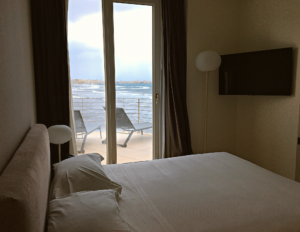A Day Trip To Motya, Italy – Tips For Transport, Attractions And What To Pack april 29, 2022 – Posted in: Italy, Travel – Tags: Attractions, Holiday, Italy, Motya, Sicily, Trapani, Travel
*The article contains advertising links, read more here: Affiliate Partners*
The Phoenician colony of Motya
Motya was a Phoenician colony founded in the ninth century BC on the island now called Isola di San Pantaleo. Motya is a contemporary paraphrase of the Phoenician word, MTR, and can therefore also be spelled Mothia, Mozia or Mozzia, depending on which street sign you are looking at.
At Motya you will find a unique archeological excavation of a Phoenician community that you can only experience in a few other places. The Phoenicians were originally a people from the area now known as Lebanon. From here, they colonized great areas around the Mediterranean, and also Cadiz. Read more about the Phoenicians here: The Phoenicia.
The island’s almost 2 km², and you can walk freely around the ruins of the 3,000 year old community, constantly amazed by how much has been preserved. The boat trip over to the island takes place from some of the most beautiful salt fields at Trapani, and you can read about it all here.
How to get to Motya
It’s a bit challenging to get to Motya if you haven’t rented a car – but it’s not impossible and definitely worth the effort! From the train station in Trapani you get on the train towards Marsala. You can buy tickets on the app Omio, where you can also see time tables for the train. You can either get off at the Mozia-Birgi station or at Spagnuola.
Whichever station you choose, there are a 45 minutes walk or 3,5 kilometers to the coast. There are two ferry berths, with red and white boats, and we took off from the harbor with the red boats closest to Mozia-Birgi. In April 2022, the ferry was €5.
In Trapani you can also rent a bike and ride all the way out to the ferry berth, which is about 20 kilometers. When you get to the coast, there is a bike path, but the rest of the way the cars drive fast and the road is narrow.
What can you see on Motya?
It costs €9 to enter the museum, Museo Giuseppe Whitaker, and they are well spent before heading around the rest of the island. The museum expleain everything you will need when walking around the island – and also the story of how the excavations started.
The island of Motya is owned and operated by the Whitaker Foundation, named after the wealthy Giuseppe Whitaker, passionate about science, history and archeology, who in the early twentieth century bought the island and conducted the first studies there.
The small museum houses some of the many artifacts that Whitaker and his team found during the excavations. As you will see when walking around the island, however, there is still much that has not yet been excavated. The crown jewel in the collection is “il Giovane di Mozia”, a beautiful marble sculpture from the 400s BC, which depicts a young man.
From the museum you can visit the small café and the only restrooms on the island. When heading out on the island, it soon becomes clear that Motya had everything it took to make a Phoenician community thrive and grow. The well-kept harbor with the preserved pillars, the vast temple square and, on the other side of the island, the large gate facing Erice, one of the other great Phoenician cities of the time, testify that this was a rich community.
The presence of the Greeks in Sicily caused many wars, which eventually also led to the destruction of Motya, led by Dionysius of Syracuse in 397 BC. The surviving Phoenicians moved to the Sicilian coast and founded the city of Lilibeo, the Roman Lilybaeum, and present-day Marsala.
You can read much more about Motya here: Mozia, an ancient city and Motya – Wikipedia
The salt pans at Motya
After the boat trip back to Sicily you can admire the beautiful salt pans that lie around the coast here in the Stagnone lagoon. Salt is still extracted here, where the beautiful mills help producing energy for the extraction. Where the red boats depart, you can also have a look inside one of the characteristic salt mills.
The 30 kilometers from Trapani to Marsala are called “La via del sale” and testify to the long tradition of salt extraction in the two cities. The salt pans start just south of Trapani, where an area of about 1,000 hectares today is a protected nature area. Here you can go on guided tours and study nature and the fantastic bird life from the towers.
More tips for your holiday in Trapani
Find a great hotel in Trapani
There are three areas you can choose to stay in when you visit Trapani: the old town, the new town and then in the medieval town of Erice. The old town is where it all happens with the shopping street Corso Vittorio Emanuele as a lively center. The new district is where the locals live in the smaller roads going in all directions from the long shopping street. Here you are also close to the best beaches. Erice is located on a mountain, making you dependent on the cable car, but in return yo have an amazing view over Trapani and the Egadi Islands.
On Booking.com you can see the hotels and holiday apartments in Trapani, and below you can also read our recommendations for Trapani. Please do your own search on Booking.com for a good hotel in Trapani right here:
Recommendations for an apartment and a hotel in Trapani
Being in Trapani for a week, whe had the time to have both a city break and a beach holiday at our time in Trapani. The first days we stayed in an apartment in the center of the old town right by Corso Vittorio Emanuele. The restaurants, harbor and sights were right below our window, and it was nice to have your own kitchen.
During the week we moved to the relatively new and really nice beach hotel Punta Tipa, where the photo is from. Trapani is not (yet) patched up with beach hotels, and in fact Punta Tipa is one of the only ones. It is located just before the best beach in Trapani (at the university) and with the most beautiful view over the city.
From the hotel there are about 10 minutes walk up to the new town and 30 minutes to Torre dell’Orologio in the old town. Trapani is an expensive city to park in, with prices from 1 euro per hour inside the city center, but Punta Tipa is with its free parking spaces a good hotel for you who is renting a car and want to use Trapani as a base to get out and see a lot of sights in the area. Read more about the hotel by clicking on the links or photo.
See more great hotel in Trapani on Booking.com – click here!


